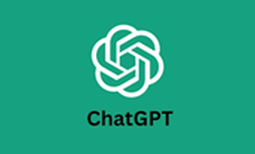|
Written by Erin Cain, Program Associate  Ever since its introduction into popular culture in recent years, artificial intelligence (AI) has proven to be a dividing issue among educators. One example of a common AI program used in schools is ChatGPT or Chat Generative Pre-Trained Transformer. ChatGPT is an accelerated artificial language chatbot developed by the company Open AI. This technology can be used for a host of different activities, such as assisting with writing models, translating text, and completing computer code. As a result of its many functions, educators have questioned the place that ChatGPT has in the classroom, or if it has a place at all. At the 39th annual RISE Conference for religious and independent schools on November 15th, keynote speaker Dr. Steven D’Agustino, Director of Online Learning, Fordham University, spoke about the use of ChatGPT in the classroom, and how to utilize it as a tool to help students access information. There are many ways in which this form of technology can benefit students. For example, ChatGPT can easily help students translate text into different languages so that assignments, directions, and literature are available to all students regardless of language base. Because ChatGPT is a language bot, it can support students by generating prompts or examples of written work, so that students have a model to guide them in completing projects. Dr. D’Agustino, in his presentation “AI: Equity, Access and Effectiveness,” emphasizes that ChatGPT can provide students with an opportunity to think critically about responses to question prompts and the analysis of good writing by studying models fashioned by AI. These are just a few reasons in which utilizing ChatGPT in the classroom can enhance learning in the classroom at all levels. Students are not the only classroom participants who can take advantage of ChatGPT. There are arguments for including ChatGPT in daily classroom life due to the benefits that it can offer teachers. ChatGPT can draft emails, convert files, and offer project and lesson plan ideas to educators. When these minute tasks are taken care of more quickly, teachers have more time to focus on their instruction and teach students the necessary content. Moreover, ChatGPT offers a chance for teachers to build deeper relationships with their students by completing the time consuming, mundane tasks that teachers are given. Finally, using ChatGPT offers opportunities for students and teachers to collaborate on projects; while students are critiquing models generated by AI, teachers can be thinking deeply about the nature and quality of the projects assigned to students. It is evident that employing ChatGPT in the classroom can benefit both teachers and students. Conversely, some educators think that including ChatGPT in instruction would be a cause for concern. Many teachers worry that ChatGPT will make it much easier for students to cheat or replicate work on assignments. A struggle that teachers may face when using AI could be figuring out how to ensure that students are completing work that reflects their knowledge. In addition, teachers may worry about the information being presented by the AI technology. ChatGPT is a language-based processing mechanism, so can only use the language to which it has been exposed. As a result, ChatGPT could easily show bias in the information that it presents. While it offers many advantages, there is reason to exercise caution if choosing to implement ChatGPT in the classroom. The debate about the use of AI in the classroom will continue among educators. Please look at the resources offered by the Fordham PDRC to learn more about this issue and other topics. Sources:
0 Comments
|
Archives
January 2024
Categories
All
|
